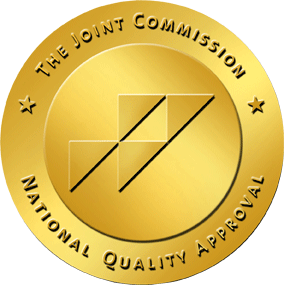High functioning anxiety is a term used to describe individuals who, despite experiencing anxiety, manage to excel in their professional and personal lives. These individuals often appear successful and put-together on the outside, while struggling internally with persistent anxiety. Recognizing the physical signs of high-functioning anxiety is crucial for understanding and addressing this condition.
The Physical Signs of High Functioning Anxiety
1. Increased Heart Rate
One of the most noticeable physical signs of anxiety is an increased heart rate, often described as feeling like your heart is racing or pounding. This response is part of the body’s fight-or-flight mechanism, preparing you to either face a threat or flee from it. While this can be useful in genuinely dangerous situations, chronic anxiety causes this response even when no real danger is present. This persistent increase in heart rate can lead to heart palpitations and even chest pain, which can be frightening and further exacerbate anxiety.
2. Shortness of Breath
Shortness of breath is another common symptom of anxiety. This symptom occurs because anxiety can cause your breathing patterns to change, leading to shallow, rapid breaths. Episodes of hyperventilation can make you feel dizzy and lightheaded, adding to the sensation of panic.
3. Sweating
Excessive sweating, particularly in situations where sweating isn’t typically expected, is another physical sign of anxiety. This can occur in the palms, underarms, or across the whole body. Sweating is a natural response to stress, as it helps cool the body down. However, for those with anxiety, this response can be triggered by everyday situations, leading to discomfort and self-consciousness.
4. Trembling or Shaking
Trembling or shaking can be a clear indicator of anxiety, especially when it occurs without any physical exertion, manifesting as subtle shakes in the hands or more noticeable tremors throughout the body. This symptom is often a result of the body’s heightened state of arousal, as it prepares to respond to perceived threats source.
5. Muscle Tension
Muscle tension is a common physical manifestation of anxiety. People with anxiety often experience tightness or pain in their muscles, particularly in the neck, back, and shoulders. This chronic muscle tension can lead to discomfort and even pain, contributing to a cycle where physical discomfort exacerbates anxiety.
6. Fatigue
Chronic anxiety can be exhausting, both mentally and physically. Fatigue is a common symptom, as the body’s constant state of alertness and the mental strain of dealing with anxiety can deplete your energy levels. Even with adequate rest, those with anxiety may feel perpetually tired and worn out, making it difficult to engage in daily activities source.
7. Headaches
Frequent tension headaches or migraines are another physical sign of anxiety. These headaches can be caused by muscle tension, stress, and the body’s overall heightened state of arousal. Anxiety-induced headaches can vary in intensity and duration, sometimes leading to debilitating pain that affects daily functioning.
8. Digestive Issues
The gut is often referred to as the “second brain” because of its connection to the central nervous system. Anxiety can significantly affect digestive health, leading to symptoms like nausea, stomach aches, diarrhea, and irritable bowel syndrome (IBS). These gastrointestinal issues can be persistent and uncomfortable, further increasing anxiety levels.
9. Dizziness
Feeling dizzy or lightheaded is another common physical sign of anxiety. This can result from hyperventilation, as rapid breathing reduces carbon dioxide levels in the blood, causing dizziness. Additionally, the body’s stress response can divert blood flow away from the brain to other parts of the body, contributing to lightheadedness.
10. Insomnia
Insomnia or difficulty sleeping is a frequent complaint among those with anxiety. Anxiety can make it hard to fall asleep, stay asleep, or achieve restful sleep. Racing thoughts and physical symptoms like increased heart rate and muscle tension can keep you awake, leading to chronic sleep deprivation. This lack of sleep can further exacerbate anxiety, creating a vicious cycle.
Managing the Physical Signs of High Functioning Anxiety
Recognizing the physical signs of high functioning anxiety is the first step toward managing them. Here are some strategies that can help alleviate these symptoms:
1. Practice Deep Breathing
Deep breathing exercises can help manage shortness of breath and reduce the overall stress response. Techniques like diaphragmatic breathing can slow your heart rate and promote relaxation.
2. Regular Exercise
Physical activity is a natural stress reliever. Exercise can help reduce muscle tension, improve sleep quality, and release endorphins, which are natural mood-lifters source.
3. Mindfulness and Meditation
Practicing mindfulness and meditation can help you stay grounded and reduce the mental strain associated with anxiety. These practices can also help manage physical symptoms like sweating and trembling source.
4. Professional Help
If anxiety significantly impacts your life, seeking professional help is crucial. At Skyway our therapists offer dialectical behavioral therapy (DBT) and other techniques to help manage anxiety. In some cases, medication may be prescribed to help control symptoms source.
Understanding and recognizing the physical signs of high functioning anxiety is essential for managing this common mental health condition. By being aware of these symptoms, you can take proactive steps to manage anxiety and improve your overall quality of life. If you or someone you know is struggling with high-functioning anxiety, don’t hesitate to seek professional help to address and manage these symptoms effectively. For more information and support, visit Skyway Behavioral Health.



